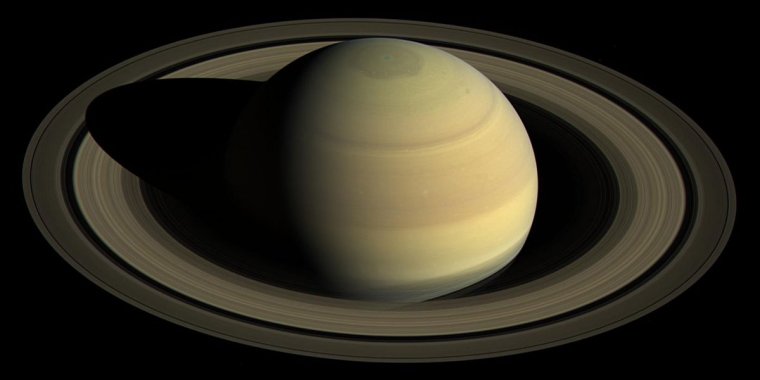| News / Space News |
Scientists Finally Know What Time It Is on Saturn
Using new data from NASA's Cassini spacecraft, researchers believe they have solved a longstanding mystery of solar system science: the length of a day on Saturn. It's 10 hours, 33 minutes and 38 seconds.

A view from NASA's Cassini spacecraft shows Saturn's northern hemisphere in 2016. Credit: NASA/JPL-Caltech/Space Science Institute
The figure has eluded planetary scientists for decades, because the gas giant has no solid surface with landmarks to track as it rotates, and it has an unusual magnetic field that hides the planet's rotation rate.
The answer, it turned out, was hidden in the rings.
During Cassini's orbits of Saturn, instruments examined the icy, rocky rings in unprecedented detail. Christopher Mankovich, a graduate student in astronomy and astrophysics at UC Santa Cruz, used the data to study wave patterns within the rings.
His work determined that the rings respond to vibrations within the planet itself, acting similarly to the seismometers used to measure movement caused by earthquakes. The interior of Saturn vibrates at frequencies that cause variations in its gravitational field. The rings, in turn, detect those movements in the field.
The rotation rate of 10:33:38 that the analysis yielded is several minutes faster than previous estimates in 1981, which were based on radio signals from NASA's Voyager spacecraft.
The analysis of Voyager data, which estimated the day to be 10:39:23, was based on magnetic field information. Cassini used magnetic field data, too, but earlier estimates ranged from 10:36 all the way to 10:48.
Scientists often rely on magnetic fields to measure planets' rotation rates. Jupiter's magnetic axis, like Earth's, is not aligned with its rotational axis. So it swings around as the planet rotates, enabling scientists to measure a periodic signal in radio waves to get the rotation rate. However, Saturn is different. Its unique magnetic field is nearly perfectly aligned with its rotational axis.
Cassini's mission ended in September 2017 when, low on fuel, the spacecraft was deliberately plunged into Saturn's atmosphere by the mission team, which wanted to avoid crashing the craft onto the planet's moons. (NASA)
YOU MAY ALSO LIKE



